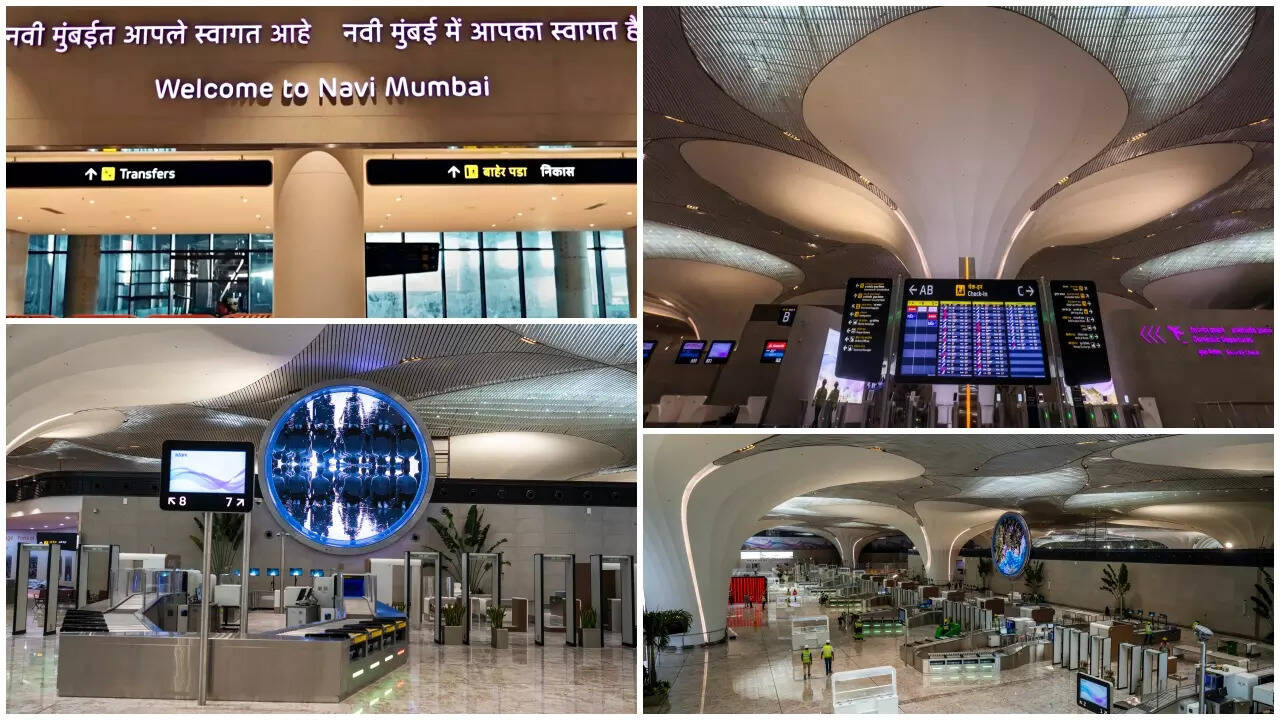Navi Mumbai’s Brand New Sky: Soaring into the Future of Air Travel
For years, it’s been the whisper on the wind, the dream on the drawing board. Now, it’s finally reality. The Navi Mumbai International Airport (NMIA), a colossal infrastructure project promising to redefine air travel in the Mumbai Metropolitan Region, is poised to open its doors. Forget cramped terminals and frustrating delays – NMIA is bringing a breath of fresh air (literally!) to India’s aviation landscape.
But this isn’t just another airport. It’s a testament to Indian ingenuity, a symbol of growth, and a promise of enhanced connectivity. So, what makes the Navi Mumbai International Airport so special? Let’s dive in.
More Than Just Runways: Understanding the Navi Mumbai International Airport Vision
Strategically located to alleviate the strain on the existing Chhatrapati Shivaji Maharaj International Airport (CSMIA) – which currently handles a passenger volume exceeding its designed capacity – NMIA represents a crucial piece of the puzzle in addressing the ever-increasing demand for air travel. The new airport is designed with a capacity to handle millions of passengers annually, significantly boosting the region’s overall aviation capabilities.
The sheer scale of the project is breathtaking. Spanning a vast area, NMIA boasts state-of-the-art infrastructure, including advanced air traffic management systems, spacious terminals designed for passenger comfort and efficiency, and provisions for future expansion. This forward-thinking approach ensures the airport can adapt to the evolving needs of the aviation industry for decades to come.
A Gateway Designed for the Modern Traveler
What can passengers expect when they finally step inside the Navi Mumbai International Airport? Think sleek, modern design with an emphasis on passenger flow and convenience. The terminals are designed to minimize walking distances, making navigating the airport a breeze. Advanced baggage handling systems promise a smoother and faster experience.

Beyond the practical aspects, NMIA is also being developed with sustainability in mind. Expect to see eco-friendly building materials, rainwater harvesting systems, and other green initiatives incorporated into the design and operation of the airport.
Beyond Mumbai: Connecting India and the World
The impact of the Navi Mumbai International Airport extends far beyond the immediate vicinity. It is poised to become a major hub for both domestic and international flights, connecting not only Mumbai but also the surrounding regions to destinations across the globe. This enhanced connectivity will undoubtedly boost trade, tourism, and economic growth in the region.
Think about it: businesses will have easier access to new markets, tourists will have more convenient travel options, and residents will benefit from increased job opportunities. The ripple effect of the Navi Mumbai International Airport will be felt throughout the economy.
Navi Mumbai International Airport: The Future is Taking Off
The inauguration of NMIA marks a significant milestone in India’s aviation history. It’s not just about building an airport; it’s about building a future where air travel is more accessible, efficient, and sustainable. It’s about connecting people, businesses, and cultures across the globe. And as the first flights prepare to take to the skies, one thing is certain: Navi Mumbai’s new airport is ready to soar.
For anyone interested in learning more about travel within the region, be sure to check out our other articles on [Mumbai travel tips and destinations](internal-link-to-related-content).
The Navi Mumbai International Airport represents more than just concrete and runways; it’s a symbol of ambition, innovation, and progress. Its successful launch and efficient operation will be vital in driving economic growth and enhancing India’s position on the global stage. It’s a project with far-reaching implications and one that holds immense promise for the future of air travel in India and beyond.







